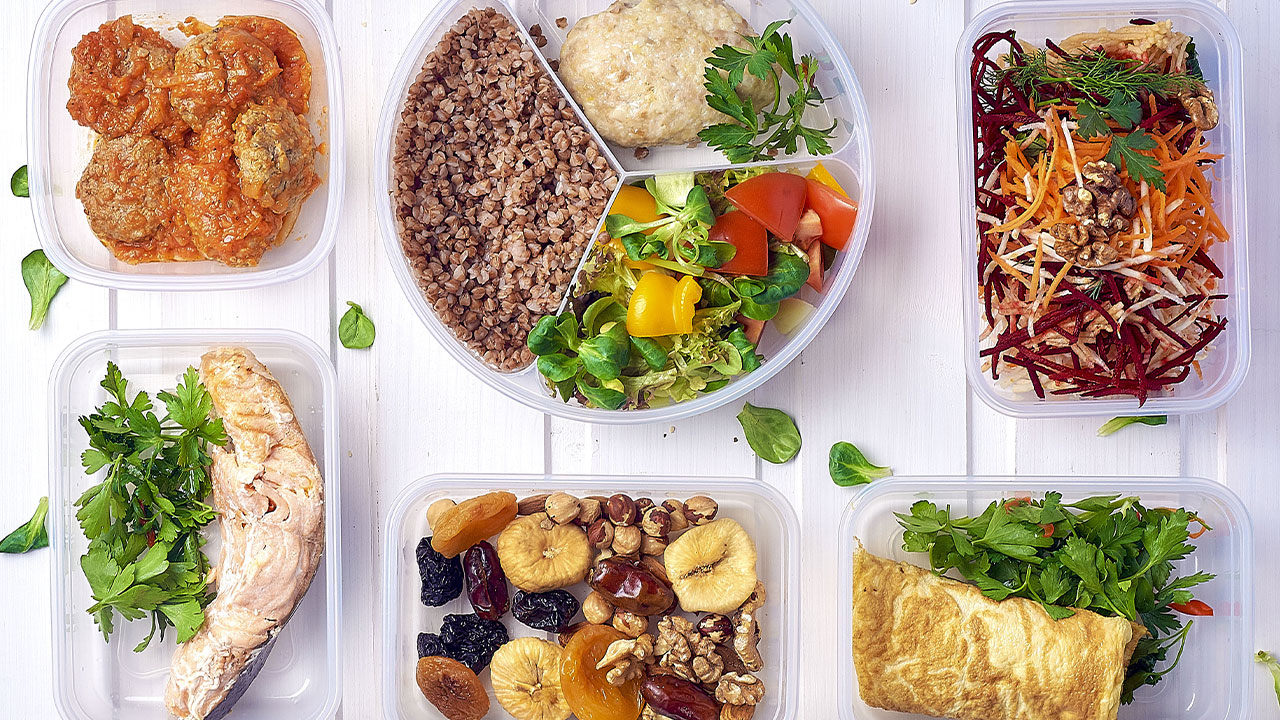How to Start Building Healthier Meal Plates

Hey Angels and Alphas,
Contrary to popular belief, eating healthy and eating for weight loss don’t have to be so complicated.
And furthermore, they don’t usually require a complete diet overhaul. In fact, most likely, you’re already doing a lot of things correctly! Sometimes it can take just a few little tweaks to help skyrocket your weight loss success, so let’s start with something you can easily utilize in your day to day life… your plate!
Building a healthy plate is just as easy as making a few smart swaps or healthy additions so you can get the most nutrition out of your meals… all while still enjoying your favorite foods.
Let’s get into it!
ALL THE ELEMENTS OF A HEALTHY PLATE
Whether you choose to follow the golden rule (50% fresh produce, 25% lean protein, 25% carbs), that’s up to you.
But the number 1 go-to for building healthier plates is to put a new focus on fresh produce. Making half your plate veggies is one of the keys to building a plate that is healthy, satiating, and nutritious. But yet, that’s only half your plate!
The remaining two quarters are important, too. These should be reserved for lean protein, high-fiber carbohydrates, and healthy fats.
READY TO BUILD YOUR HEALTHY PLATE?
Let’s start with FRESH PRODUCE.
Making about half your plate produce will ensure you’re getting tons of vitamins, nutrients, and fiber that will fill you up and keep you satiated. Veggies are not only chock full of vitamins and minerals, but they also contain antioxidants and phytonutrients. When you make these the base of your plate, you add a ton of volume for a very small number of calories. Always choose a variety of veggie colors each day so you can balance out micronutrient consumption.
Once you have all your veggies piled high, now it’s time to add a little fun, flavor, and a TON of healthy nutrients to the other side of your plate.
So how do we do that?
With HIGH-FIBER CARBOHYDRATES, of course!
You can also refer to this as the “carb corner” of your plate, and it’s that part of your plate that should usually be stacked with beans, legumes, whole grains, tacos, high-fiber breads, pasta, starchy veggies (such as potatoes) or other healthy carb options.
This is the place to go heavy on fiber, since carbs that are higher in fiber are pretty much the healthiest options you can get and they play an important role in weight loss, gut health, your mood, and your blood sugar regulation.
High-fiber carbs are also much more abundant in nutrients when compared to refined carbohydrates, meaning they contain higher levels of protein, minerals, vitamins, and more.
What about LEAN PROTEIN?
The other quarter of your plate should be reserved for a protein source. Protein takes much longer to digest than your carbohydrates, so it’s very satiating and vital for staying full and satisfied. It may even help suppress appetite in the later stages of your day and curb food cravings. This makes getting in some protein at each meal one of the best weight-loss strategies out there.
But protein isn’t just about weight loss, it’s also necessary for building muscle, building hormones and enzymes that help with your digestion, and then supplying oxygen to your cells. Not to mention, it’s also crucial when it comes to building bones, cartilage, and even skin!
About ¼ of your plate should always be full of healthy, lean protein sources, including chicken, fish, turkey, eggs, yogurt, or just a lean cut of meat. And let’s not forget nuts, seeds, and beans – also very rich in protein!
And finally, your HEALTHY FATS.
Adding healthy, preferably plant-based fats to your meals is one of the best ways to add staying power (as well as flavor!). Your body (especially your brain) needs healthy fats so it can survive and thrive. If you’re not getting in enough fat, you could be experiencing things such as dry skin, hair loss, or even a weakened immune system. Fat will also help you with the absorption of certain vitamins such as vitamin E, K, A, D, which are all fat-soluble, which means they’re absorbed alongside fat. Dietary fat is also a great source of essential fatty acids, a special type of fat that our body cannot make by itself.
Plant-based fat sources are obviously the healthiest, and they include avocado, seeds, olive oil, and certain nuts/nut butters. These foods are high in both monounsaturated fats as well as vitamins and minerals. This means you’re getting an incredible boost of nutrition when you use them in place of usual saturated fats like sour cream or butter.
And to wrap it all up, just make sure to avoid partially hydrogenated oils. They contain unhealthy trans fats which contribute to heart disease and increase inflammation throughout the body.





